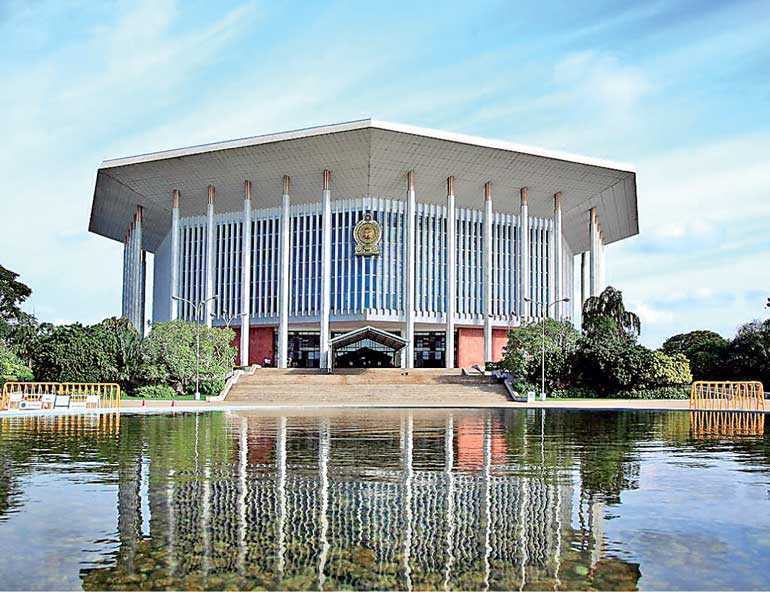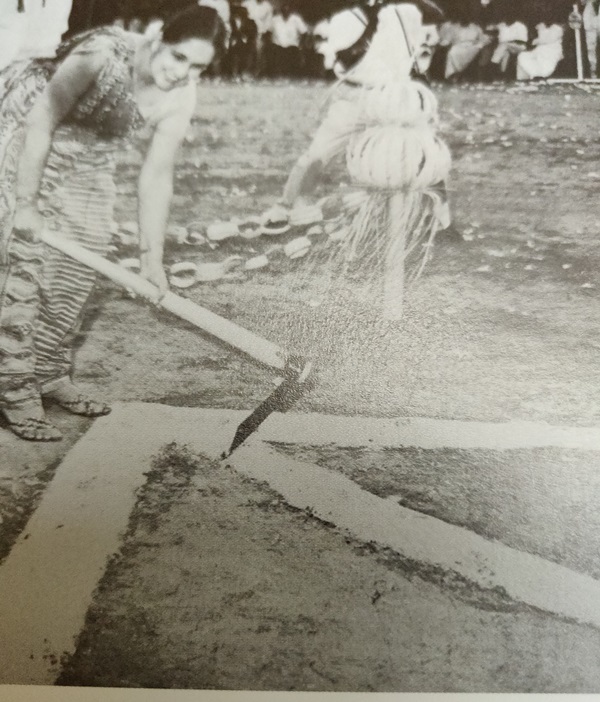Vignettes from the saga of Colombo’s Bandaranaike Memorial International Conference Hall
Posted on August 26th, 2019
By P.K.Balachandran/Ceylon Today
If the Rubber-Rice Pact of 1952 sowed the seeds of good and enduring relations between China and Sri Lanka, the decision to build the Bandaranaike Memorial International Conference Hall (BMICH) with Chinese technical and financial help in 1964, cemented ties between the two countries.

The importance of these events lies in their historical context. The Rubfber-Rice pact was the result of a dire economic need in both countries. Lanka desperately needed rice to feed its population. The US was not willing to give Lanka a US$ 50 million loan to buy rice. The US was also not offering a fair price for Lankan rubber. Communist China badly needed rubber because the US had banned the sale of rubber, a strategic material, to Communist China.
The situation called for out of the box” thinking. Barter of Chinese rice for Sri Lankan rubber was suggested and accepted because it suited both countries. Lanka got rice at a cheaper price and got a higher price for its rubber. The deal lasted till 1982.
In 1964, both Lanka and China needed international linkages to assert their independence from the Western powers led by the US. During the Premiership of Mrs.Sirimavo Bandaranaike, Lanka had set itself free from the apron strings which had traditionally tied it to the West. Lanka was part of the anti-imperialist Non-Aligned Movement (NAM). Mrs. Bandaranaike wanted to be a pillar of NAM along with India, Indonesia, Egypt, Yugoslavia and Ghana. China needed to assert its independence and pursue its One China” policy against a hostile United States and get its due status in the UN.
To enable it to play its new-found international role, Lanka needed a large and modern international conference hall. China’s help was sought, and it was given free of charge. The result was the Bandaranaike Memorial International Conference Hall (BMICH) named after Mrs. Bandaranaike’s husband and former Prime Minister SWRD Bandaranaike, who had initiated the post-independence movement against domination by the West.
SWRD Bandaranaike, better known as Banda”, had become Prime Minister in 1956. In 1957, Chinese Prime Minister Zhou Enlai and Vice Premier He Long, visited Lanka. During the visit, Banda and Zhou Enlai jointly adopted the Five Principles of Co-existence and the Bandung Principles for the achievement of world peace and cooperation.
On February 4, 1957, Banda invited Zhou Enlai to be chief guest at the ninth Lankan Independence Day celebrations. According to a bilingual book on the BMICH entitled A Symbol of China-Sri Lankan Friendship” Zhou Enlai spoke in pouring rain which moved the audience”.
In February 1964, when Banda’s widow, Sirimavo Bandaranaike, was Prime Minister, China’s Vice Chairman, Song Qingling and Premier Zhou Enlai visited Lanka. It was during this visit that Mrs. Bandaranaike requested China to help build the BMICH. The request was granted, and China decided to gift the building citing Mrs. Bandaranaike’s steadfast fight against imperialism and colonialism.”

Zhou’s Principles
The Chinese Ministry of Foreign Trade and Economic Cooperation assigned the work on BMICH to the Beijing Industrial Building Design Institute of the Ministry of Works. The design’s principles were enunciated by Premier Zhou Enlai himself.
His principles were: The building scale shall be appropriate for Sri Lanka’s conditions and requirements. It shall adapt to the tropical climate and reflect the local style. The internal facilities and equipment shall adopt modern technology.
The Building Design Institute sent a delegation to Lanka headed by its Vice President Yuan Jingshe and included Chief Architect Dai Nianci. The delegation was in Sri Lanka for four months, touring the entire country to see for itself local building styles, culture, customs and beliefs so that the BMICH accords with the culture, beliefs and styles of Lankans.
The delegation collected a large amount of basic data on the materials available, physical conditions and climate changes and finally produced a model to show. After inspecting the model carefully, Prime Minister Mrs. Bandaranaike said excitedly: I thank Prime Minister Zhou Enlai for sending us the highest gift. I thank the outstanding contributions the Chinese experts have made for the project. BMICH is a symbol of China-Sri Lanka friendship”.
Architect Dai Nianci, who had a deep understanding of Sri Lanka’s natural and human environment, proposed the classical practice of having a symmetrical, octagonal layout with a colonnade because this was not only elegant but stable. He suggested that the building be painted white which is favored in tropical architecture and is also favored by traditional Lankans. Due to the tropical climate, ventilation was every important and that was achieved by maximizing the use of natural ventilation.

But notwithstanding intense preparations by the Chinese, it was only on November 24, 1970, that the Lankan government commenced work on the BMICH. Mrs.Bandaranaike broke the ground in the traditional way with a mammoty” to signify the start of construction. China had sent 400 technicians, 40 engineers and managers and 60 carpenters to do the work.
Both Zhou Enlai and Mrs. Bandaranaike were constantly monitoring the project with the latter visiting the site often. The Sri Lankan Chief Engineer of the project, Damodalingam, got along well with his Chinese counterparts and ensured perfect coordination between the Chinese and Sri Lankan personnel. This ensured that there were no serious accidents during the construction period of two years and five months.
Initially, language was a barrier and communication was through sign language. But before long, locals picked up some Chinese and the Chinese picked up some Sinhala.
On one occasion, a number of Chinese workers suffered from food poisoning. But as a measure of abundant precaution, government hospitalized all 200 workers. Given the shortage of hospital beds, local patients gave up their beds for the sake of the suffering Chinese.
It was not easy for workers from cold China to put up with the intense heat of Colombo. The BMICH construction site also had monkeys, snakes and mosquitoes. Once a monkey jumped on to the middle of the roof truss and lingered there for three days. Though no one was bitten by a snake, the Chinese embassy had on stand by a doctor with knowledge of local anti-snake drugs. But still snakes would interfere with the work or choose to visit workers while they were at lunch.
Workers would be woken up by ant bites, as ants were aplenty on the site. When local workers told the Chinese that ants are averse to the smell of ink (even from newspapers), the Chinese embassy started sending newspapers to the workers.
Since ceramic tile technology was not developed in the 1970s, each tile was chosen carefully to make the flooring smooth. Steps were taken to keep termites away.
On completion of the work, there was a fitting ceremony in which a stage play called Path to Brightness” written and directed by Chandrika Bandaranaike, daughter of Mrs.Bandaranaike and future Lankan President. The play was made into a film and was sent to Premier Zhou Enlai along with a model of the BMCH set with rubies. The model is now in the Asia Gift Pavilion at the National Museum in China.
Set in a land area of 13 hectares and with a floor of area of 32, 540 sq meters (in 2013), the BMICH is a grand, spacious and airy structure. Its vast open and verdant space makes it an ideal place for large and small conferences, public gatherings, shows and exhibitions.
The hall came in handy in 1976, when the fifth Non-Aligned Nations’ Summit was held in Colombo with 120 heads of government attending. The delegates told Mrs.Bandaranaike that the assembly hall was better than the halls in which previous summits were held. Mrs.Bandaranaike told the Chinese envoy that the summit would not have been such a huge success if it was not for the magnificent BMICH.
August 26th, 2019 at 7:03 pm
Perhaps in Feb 1964, Mrs. B, requested for technical aid as well. So, the construction of a textile factory with Chinese aid (a grant) was started simultaneously with BMCIH at Pugoda and I happened to be the Resident Agent (or Engineer in Charge) from the beginning to the end and commissioning. Chinese had their base in the site at Pugoda and two or tree cars (Upali built Mazda) would set off each morning from there heading to BMICH site.
With only two or three years after graduation, I was wondering why they (State Engineering Corp. Management) had to send me for such a difficult task as handling our workers was a very tough job. I had more than a thousand of them. Even today I have realized handling our workers is the most difficult job. Perhaps that is the reason many companies prefer to hire foreigners like Indians, Bangladeshis etc. I tried various methods like issuing warnings, suspending some of them or even dismissing them, but nothing of that sort worked. Once on a very tall water tower we were constructing, there was a wasp hive ( a bambara kuduwa) and the workers refused to go up. There was no one among the thousand or so workers who would go up and drive them away. So, at the end I had to go up myself in the bucket that conveyed workers up and down by the tower crane and burn the hive. At the end we discovered that only way is by putting them on an incentive scheme. Work norms were prepared for each and every item of work giving the extent to be completed within a day and if they exceed a proportionate amount would be paid as bonus. We found that they would complete more than two or three times of that within a day and it became a great success. A couple of weeks ago I put my small team on a similar scheme.
Anyhow the project was successfully completed and Mrs. B came and opened it in 1975. But unfortunately, today the mill and the whole complex have been sold to foreigners by BOI. I stand to be corrected if I am wrong.
August 26th, 2019 at 10:11 pm
Although some in our country see the US and China as permanent enemies, they are not.
It is Henry Kissinger and Madeleine Albright duo (who were both Jewish)were instrumental in making the way for opening the door for Chinese to get into the world market and engage in free trade. The current US Prez. Donald Trump is trying to halt the free flow of their money ($500 billion a year) into China thereby giving opportunity to his countrymen to thrive which is the correct thing to do by any leader of a country. Our leaders should emulate him. Even as of yesterday evening, where they were having the G7 meeting, Chinese vice chairman was trying to have a backdoor discussion with US for lifting the trade sanctions, according to Donald Trump.
We must try and get help from both. But do be on the dilution that they will come and help us on technology. We have to build it ourselves. Probably Gota will know how.